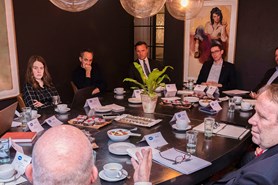On 28th April we held our Spring 2021 Market Report Webinar. We had many interesting questions that we run out of time to answer on the day, therefore our experts have answered them below.
Regarding tender opportunities, where did industrial and logistics come?
14 percent of respondents said logistics and 9 percent said ‘other’ such as industrial and data centres.
Does your market survey interrogate how consultants and supply chain are training their teams to meet net zero?
Not in this current report, we will consider this as a question for our next survey.
Will steel price hikes be limited to this year only, or will the uncertainty around liberty steel result in this being extended into next year and beyond?
As explained in the question at the end of the webinar, there is a “perfect storm” of factors currently causing materials increases, particularly as the world recovers from the effects of the pandemic. For the short-term, we expect that materials pressures will continue during 2021. However, in the longer term, we expect that balance will return as demand becomes more in line with typical expectations.
What experience of digital twins do you have in the UK?
The concept of a digital twin originated in the product development industry. It is an efficient way of testing new ideas and scenarios in a risk-free environment.
The construction industry only added another facet to the multitude of digital twin applications, such as streamlined operation and maintenance activities or systems performance monitoring.
As all great ideas tend to yield the best results when shared, true success lies in integrating digital twins into a larger interconnected ecosystem where the intelligence capabilities can be maximised, patterns identified on a large scale and trends analysed across larger estates. Under the leadership of the Centre for Digital Built Britain (CDBB), the National Digital Twin programme (NDTp) is pursuing just that.
The energy and infrastructure sector seem to be making the most significant strides towards embracing this technology, with the healthcare sector right behind.
Mirroring the physical built environment into a virtual one also reveals the businesses’ aptitude to operate within an increasingly digitised environment.
Organisations worldwide are creating digital twins of their assets to maximise their potential for larger collaboration with an already-established network of digital twins and to identify and deconstruct their own digital silos and harmonise the tools and technologies used in their business. By linking the internet of things to the digital twin models, unbroken live data threads can be discovered. This would create the perfect habitat for machine learning and artificial intelligence and accelerate the organisation’s digital growth.
Organisations who get left behind may struggle to participate in future markets and lose the opportunity to access larger collaborations.
Your market data seemed to be very upbeat about current and future industry workloads; this coupled with Brexit/COVID-19 driven resourcing challenges is leading to specialist sub-contractors being far more cautious and risk adverse in their pricing; likewise in our own pricing. This does not seem to be reflected in your inflation figures. Do you feel your inflation percentage rises are far too low?
The survey shows that inflation is starting to increase, especially for projects which go into 2022 and 2023. Due to projects being put on hold/delayed during 2020, there is increased competition at the moment for a reduced number of projects. As more projects come online during the year, we expect inflation will be seen due to materials and labour pressures and a greater pool of projects. This is reflected in this graphic:
Of course, it is very hard to predict the market at the moment, but based upon the information we have/tender returns, we see this is our best forecast for the inflation picture generally - each project will need to be assessed on its own merits. Projects with longer programmes will have more risk and this will translate into pricing – project teams will need to work together to work out the best way of approaching this risk in pricing.

James Garner
Senior Director - Global Head of Data and Intelligence
- james.garner@gleeds.com
- +44 (0)7957 464 880

Nicola Sharkey
Project Director, UK Insights and Research Lead
- nicola.sharkey@gleeds.com
- +44 (0)207 6317 324



